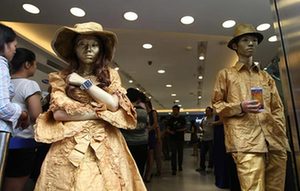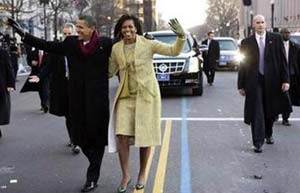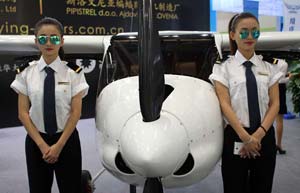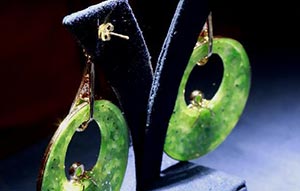

|
 |
|
A Kuwaiti representative greets visitors with coffee during the 2013 China-Arab States Expo at the National Pavilion of Kuwait, the expo's guest country of honor. [Photo / Beijing Review] |
Faranak Kamyar has a shop in Tehran selling Moaragh, wood blocks with individual pieces of exotic wood handcrafted together. Her shop receives orders from Europe, the United States and regional Arab neighbors.
"I used to think China was not a good market," Kamyar told Beijing Review. But in 2009 she met Masoud Kamali Ardakani, Commercial Attaché of the Embassy of Iran to China, who encouraged Kamyar to go to China. Since then Kamyar began to attend several industrial exhibitions in Urumqi of Xinjiang Uygur autonomous region, Kunming of Yunnan province, Xining of Qinghai province and Nanchang of Jiangsu province. The most recent exhibition she attended was the China-Arab States Expo held on Sept 15-19 in Yinchuan, Ningxia Hui autonomous region.
"Chinese customers haven't seen similar products before, so they need some time to accept my products," Kamyar said. Prices of her products range from 400-4,000 yuan ($65.35-653.47) per piece. Still, she is making money in China. At a four-day trade exhibition last year in Urumqi, she sold 20,000 yuan ($3,267.34) of her products.
Kamyar's sales may seem modest or even insignificant, but they offer a glimpse into the growing trade between China and the Middle East as well as other Arab states, a region that is actively courting Chinese investment and warming up to Chinese goods.
Active trade
According to statistics by China's Ministry of Commerce (MOFCOM), bilateral trade between China and Arab states reached $222.4 billion in 2012, up by 14 percent year on year, hitting a record high. Of the total, China sold $91.3 billion worth of goods and bought $131.1 billion of goods in return. In the first half of 2013, trade between China and the region continued to grow, reaching $115 billion, up 3 percent year on year. Arab states have become China's sixth largest trade partner.
Northwest China's Ningxia, home to the country's largest Muslim community, plays an important part in China's trade with Arab nations. According to figures from the Department of Commerce of Ningxia Hui autonomous region, the trade volume between Ningxia and Arab nations reached $136.04 million in the first half of the year, 8.48 times the figure in the same period last year.
"In 2012, non-oil trade between China and Arab states in the region reached $119.1 billion, accounting for more than half of the total trade volume," said Yang Fuchang, former vice minister of Foreign Affairs. This shows that bilateral trade cooperation is growing more diversified."
"More Chinese products with high-tech elements are exported to Arab nations. Cars and electronic devices made in China are gradually being accepted and liked by Arab consumers," said Li Xiaobing, deputy director of MOFCOM's Department of Western Asian and African Affairs, at the China-Arab States Expo.
The Gulf Cooperation Council (GCC), established in 1981, is a political and economic union of Arab states bordering the Persian Gulf. Its member states include Bahrain, Kuwait, Oman, Qatar, Saudi Arabia and the United Arab Emirates (UAE). According to Li Jinzao, Vice Minister of Commerce, China-GCC trade reached $155 billion in 2012, accounting for 70 percent of all China-Arab trade. In the first half of this year, GCC countries invested more than $100 million in China, a year-on-year increase of 30 percent.
"The Chinese Government is not only encouraging capable Chinese companies to invest in the infrastructure and manufacturing sectors, but also tout their new technology in building advanced oil and gas storage, transportation facilities and petroleum engineering solutions to the member states of the GCC," said Li.
 New BMW 5 Li hits Chinese market
New BMW 5 Li hits Chinese market
 China to officially launch Shanghai FTZ on Sept 29
China to officially launch Shanghai FTZ on Sept 29
 Time to get smart
Time to get smart
 Leaders' car picks around the world
Leaders' car picks around the world
 Shining models at 15th Aviation Expo China
Shining models at 15th Aviation Expo China
 2013 Beijing Intl Jewelry Expo kicks off
2013 Beijing Intl Jewelry Expo kicks off
 Microsoft revamps Surface to challenge Apple
Microsoft revamps Surface to challenge Apple
 Highlights of AOPA-China Fly-In air show
Highlights of AOPA-China Fly-In air show